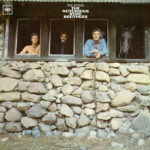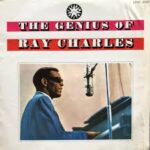 Miles Davis’ “Birth of the Cool” is a groundbreaking album in the history of jazz. Originally released in 1957, the album features a collection of tracks that were recorded between 1949 and 1950 by a nonet that included some of the most talented musicians of the time. Here is a track listing for the album, along with a brief review of each track:
Miles Davis’ “Birth of the Cool” is a groundbreaking album in the history of jazz. Originally released in 1957, the album features a collection of tracks that were recorded between 1949 and 1950 by a nonet that included some of the most talented musicians of the time. Here is a track listing for the album, along with a brief review of each track:
“Move” – This upbeat track features a catchy melody and some impressive solos by Davis and the other members of the nonet.
“Jeru” – This track is named after the nickname of Gerry Mulligan, the baritone saxophonist who wrote the song. It features a laid-back melody and some great interplay between the horns.
“Moon Dreams” – This is a dreamy, atmospheric track that showcases the more mellow side of Davis’ playing. The arrangement is subtle and beautiful.
“Venus de Milo” – This track is named after the famous statue, and it has a similarly graceful and elegant quality to it. Davis’ muted trumpet playing is particularly lovely on this track.
“Budo” – This track has a more frenetic energy, with a complex melody and some impressive improvisation from the band members.
“Deception” – This track has a cool, noir-ish vibe to it. The melody is haunting, and Davis’ playing is emotive and soulful.
“Godchild” – This track is named after composer George Wallington’s son, and it has a playful, almost childlike quality to it. The melody is catchy and memorable.
“Boplicity” – This track is a classic example of cool jazz, with a smooth, laid-back groove and some impressive solos from the band members.
“Rocker” – This track has a more uptempo, driving rhythm to it, and features some impressive interplay between the horns.
“Israel” – This track has a haunting, mysterious quality to it, with a subtle Middle Eastern influence in the melody.
“Rouge” – This track has a darker, more ominous feel to it, with a brooding melody and some impressive playing from the nonet.
Overall, “Birth of the Cool” is a must-listen for any jazz fan. It showcases Davis’ versatility as a musician and composer, as well as the incredible talents of the other musicians in the nonet. The album’s innovative use of arrangements, harmonies, and instrumentation helped to pave the way for the cool jazz movement of the 1950s, and it remains a classic of the genre to this day.
This post has already been read 572 times!
























